Germanium(II) iodide
Synonym(s):Germanium diiodide
- CAS NO.:13573-08-5
- Empirical Formula: GeI2
- Molecular Weight: 326.45
- MDL number: MFCD00135537
- EINECS: 236-998-1
- SAFETY DATA SHEET (SDS)
- Update Date: 2023-10-04 14:18:09

What is Germanium(II) iodide ?
Chemical properties
Germanium(II) iodide is a yellow to gold flake or powder. It can dissolve in cold water, concentrated hydriodic acid, and dilute acid. It has limited solubility in chloroform and carbon tetrachloride, while it does not dissolve in carbon disulfide. It decomposes in hot water and reacts with an ammonia solution to form imine germanium. Under vacuum, it sublimates at 240°C. It remains stable in dry air but undergoes hydrolysis in moist air.
The Uses of Germanium(II) iodide
Germanium(II) iodide acts as a reagent that forms stable ionic adducts with carbenes. It is also used in the preparation of allylgermanes by reacting with allylstannanes. Further, it reacts with allyl bromide in the presence of zinc iodide to get allylgermanium(IV), which on reacts with carbonyl compounds to give the corresponding homoallylic alcohols.
What are the applications of Application
Germanium(II) iodide is a reagent which forms stable ionic adducts with carbenes
Preparation
From a germanium sulfide powder by adding excess 57% concentrated hydriodic acid, under stirring at 100 ℃ for the reaction, filtered while hot, the filtrate is slowly cooled system. It can also be made by adding germanium tetraiodide to distilled water and 57% concentrated hydriodic acid with stirring, adding 50% hypophosphite, boiling under reflux, crystallizing after reaction, washing with dilute hydriodic acid and drying.
Properties of Germanium(II) iodide
| Melting point: | 460°C |
| Boiling point: | 545°C |
| Density | 5.37 g/mL at 25 °C(lit.) |
| storage temp. | under inert gas (nitrogen or Argon) at 2–8 °C |
| solubility | Soluble in dilute hydrochloric acid. |
| form | orange-yellow hexagonal crystals |
| color | Yellow to brown |
| Specific Gravity | 5.73 |
| Water Solubility | soluble H2O [CRC10] |
| Sensitive | Air & Moisture Sensitive |
| CAS DataBase Reference | 13573-08-5(CAS DataBase Reference) |
| EPA Substance Registry System | Germanium iodide (GeI2) (13573-08-5) |
Safety information for Germanium(II) iodide
| Signal word | Danger |
| Pictogram(s) |
 Corrosion Corrosives GHS05 |
| GHS Hazard Statements |
H314:Skin corrosion/irritation |
| Precautionary Statement Codes |
P260:Do not breathe dust/fume/gas/mist/vapours/spray. P280:Wear protective gloves/protective clothing/eye protection/face protection. P303+P361+P353:IF ON SKIN (or hair): Remove/Take off Immediately all contaminated clothing. Rinse SKIN with water/shower. |
Computed Descriptors for Germanium(II) iodide
New Products
4-AMINO-TETRAHYDRO-PYRAN-4-CARBOXYLIC ACID HCL 4-(Dimethylamino)tetrahydro-2H-pyran-4-carbonitrile 4-Aminotetrahydropyran-4-carbonitrile Hydrochloride (R)-3-Aminobutanenitrile Hydrochloride 3-((Dimethylamino)methyl)-5-methylhexan-2-one oxalate 1,4-Dioxa-8-azaspiro[4.5]decane 5-Bromo-2-nitropyridine Nimesulide BP Aceclofenac IP/BP/EP Diclofenac Sodium IP/BP/EP/USP Mefenamic Acid IP/BP/EP/USP Ornidazole IP Diclofenac Potassium THOMAIND PAPER PH 2.0 TO 4.5 1 BOX BUFFER CAPSULE PH 9.2 - 10 CAP SODIUM CHLORIDE 0.1N CVS ALLOXAN MONOHYDRATE 98% PLATINUM 0.5% ON 3 MM ALUMINA PELLETS (TYPE 73) LITHIUM AAS SOLUTION 2-Bromo-1-(bromomethyl)-3-chloro-5-nitrobenzene 2-Bromo-3-nitroaniline N-(3-Hydroxypropyl)-N-methylacetamide 3-Bromo-6-chloropyridazine 4-ethyl-3-nitrobenzoic acidRelated products of tetrahydrofuran
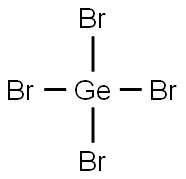
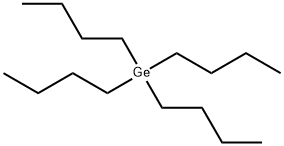

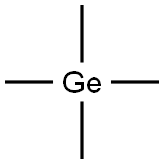
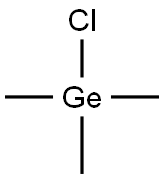

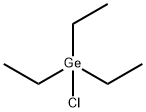

You may like
-
 Germanium(II) iodide CAS 13573-08-5View Details
Germanium(II) iodide CAS 13573-08-5View Details
13573-08-5 -
 Germanium(II) iodide CAS 13573-08-5View Details
Germanium(II) iodide CAS 13573-08-5View Details
13573-08-5 -
 Germanium(II) iodide CAS 13573-08-5View Details
Germanium(II) iodide CAS 13573-08-5View Details
13573-08-5 -
 1823368-42-8 98%View Details
1823368-42-8 98%View Details
1823368-42-8 -
 2-(3-(tert-butyl)phenoxy)-2-methylpropanoic acid 1307449-08-6 98%View Details
2-(3-(tert-butyl)phenoxy)-2-methylpropanoic acid 1307449-08-6 98%View Details
1307449-08-6 -
 Ethyl 3-(furan-2-yl)-3-hydroxypropanoate 25408-95-1 98%View Details
Ethyl 3-(furan-2-yl)-3-hydroxypropanoate 25408-95-1 98%View Details
25408-95-1 -
 2-Chloro-5-fluoro-1-methoxy-3-methylbenzene 98%View Details
2-Chloro-5-fluoro-1-methoxy-3-methylbenzene 98%View Details
1805639-70-6 -
 Lithium ClavulanateView Details
Lithium ClavulanateView Details
61177-44-4